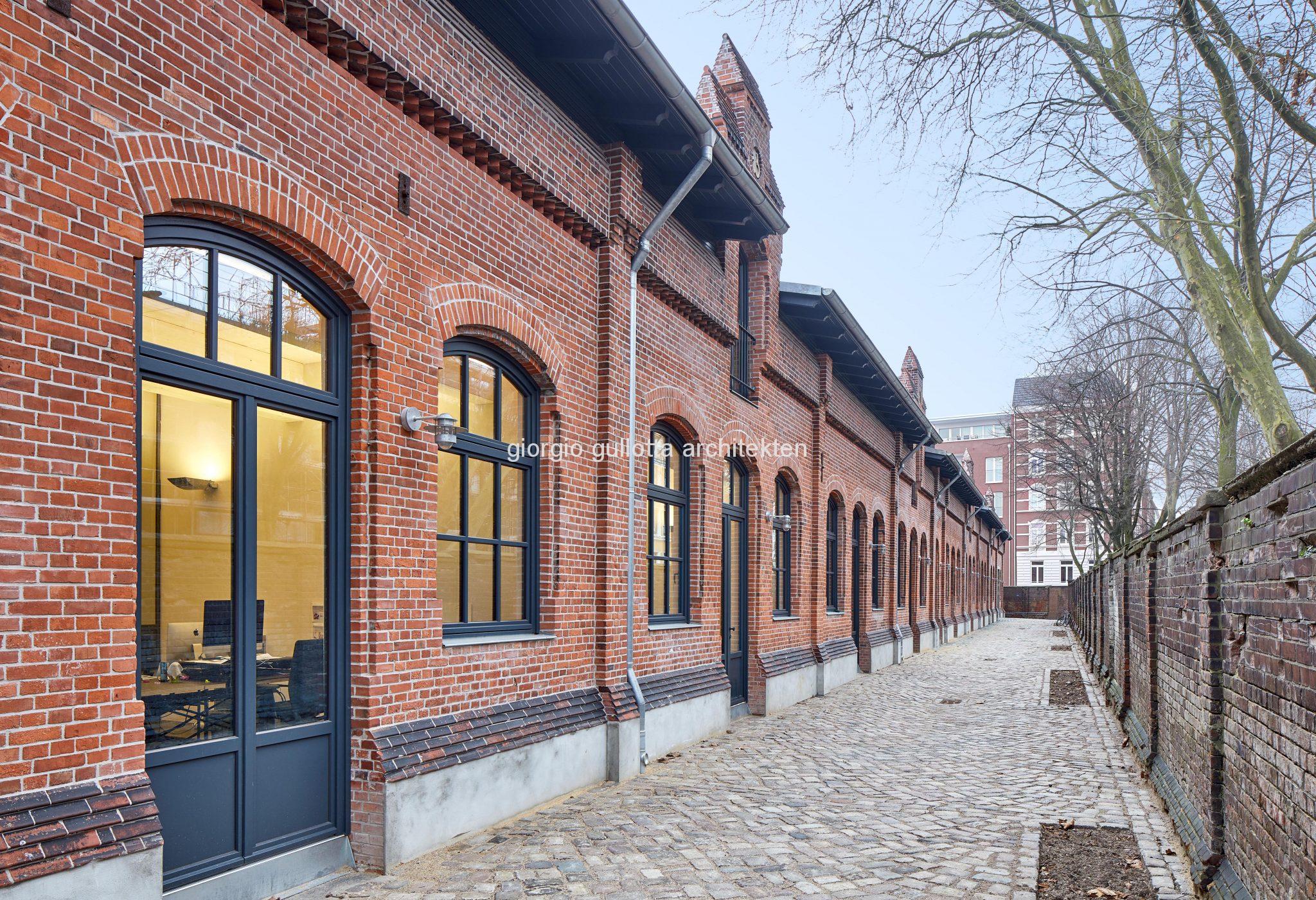
Adjacent to today's Hamburg wholesale meat market is the historic Contumazstall. Originally, the approximately 90-meter-long stable from 1890 served as a quarantine station for cattle, but in recent decades it has only been used as a storage and stabling area. It is one of the few remaining buildings of the original wholesale meat market. During this time, the structure experienced a dramatic deterioration of its substance. In addition, due to a lack of respect for the building, the historic barn was tinkered with with brute ignorance. Window openings were bricked up, gutters torn off, new openings cut in, etc. The condition was so bad that the building had to be restored. The condition was so bad that the Free and Hanseatic City of Hamburg approved the building for demolition. Through the commitment of the architects to save the building, a client was finally found who was enthusiastic about preserving the Contumazstall. Today, the historic structure presents itself as a modern, open and unique office building in the middle of the lively Schanze district. In the course of the revitalization and conversion of the individual stables into office space, the character of the listed building is being brought out again. Through loving details and changes that are not visible to the observer, the stables are transformed into a coherent building. The extensive renovation included the preservation and reconstruction of the historic brick facade. Among other things, 14,000 bricks were replaced in the facade area, the partially destroyed dwarf gables were renewed, and the west gable was rebuilt according to historical models. The badly damaged roof with its historic roof truss was also extensively reconstructed, supplemented and ingeniously rebuilt, and large skylights were added. In order to do justice to the new use and to illuminate and ventilate the overdeep first floor, large atriums were cut into the newly installed board-stacked ceiling. The large skylight bays thus illuminate the central zone of the first floor. The choice of flooring materials emphasizes the industrial loft character. An industrial screed was brought in, which is structured in the area of the historic wall bulkheads in each case by handmade kaolin tiles. In addition, the historic structure is thus fully reflected in the finish. The office cells are separated from the central zone by glass elements designed by the architect. Here, it was particularly important that the workmanship was based on historic steel structures. The historic large paving of the old exterior, which was found in the course of the conversion, could be removed and was relaid on the south side after completion, thus underlining the harmonious overall impression.
GGA in a consortium with Schnittger Architekten + Partner